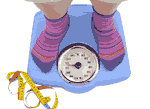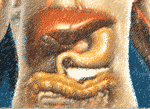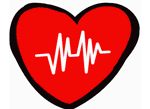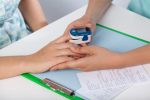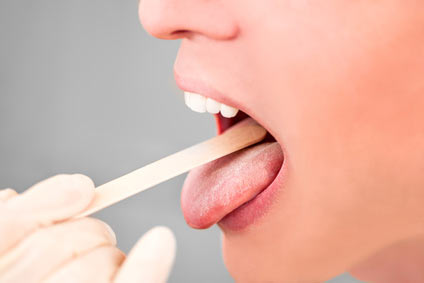Sleep Apnea Weight Loss Plan
How to Lose Weight with Sleep Apnea

If you have sleep apnea and you are overweight, sleep apnea weight loss plan will definitely improve your sleep disorder and your overall health.
This article contains step-by-step instructions to loose weight if you have sleep apnea and weight problems.
As obesity is the most important risk factor for apnea episodes, sleep apnea weight loss would be expected to lead to an increase in upper airway dimensions and an improvement in sleep breathing disorder.
The link between weight loss and degree of sleep apnea improvement are not always directly related, although it has been shown that a 1% change in weight is associated with a 3% change in AHI.
It has been shown that weight loss can improve sleep efficiency, decreased snoring and improved oxygenation of the blood.
In cases of dramatic weight loss by special dieting or surgery, OSA severity is improved and in some patients completely cured.
How to Lose Weight When You Have Sleep Apnea?
Countless clinical studies demonstrated that sleep apnea can be cured in patients with weight problems. However, losing weight when you barely can stay awake, is a very difficult task for any patient.
If you are a CPAP user, sleep apnea weight loss can be much easier than without effectively using a CPAP. The CPAP therapy improves your quality of sleep and your energy levels to the point that you can stick to exercise and diet regime that will result in effective weight loss.
The following Sleep Apnea Weight Loss Plan can be followed by anyone who has OSA and is overweight, with or without a CPAP machine. Keep in mind though, using a CPAP machine will make this process much easier for you.
Sleep Apnea Weight Loss Plan
Quick Nutrition Advices for OSA Patients
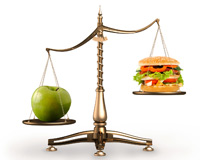
As several clinical studies demonstrated, even a 10% of losing weight can have a drastic effect in improving your health.
For example: if a 100 kg person loses 10 kg in weight, he will have a significant decrease in high blood pressure.
So, with every kg you lose, your health and quality of life increases, and so your lifespan.
Here are the main rules that you should follow in order to lose weight:
- Don't eat a lot before bedtime!
You don't need too much energy when you go to sleep. Also, you're not making the most healthier choices when you eat in the evening (I'm tempted to eat pizza and chocolate before bedtime, which gives me a lot of calories and energy).
When you eat a lot or in big portions close to bedtime, the food often stays longer in your stomach, causing acid reflux or GERD.
Try to focus on eating more calories and food earlier on and throughout the day, rather than in the evening.
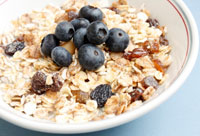
For the new Sleep Apnea Weight Loss Plan you want to consume 3 small meals and two or three snaks per day, rather than eating 2 large meals.
This will help you keep your blood sugar under control. It will also prevent you from overeating on every meal.
Don't try to be very restrictive with your meals by not eating all much throughout the day. Hunger will get you later on, and you will still gonna eat that big meal at the end of the day.
One way to resolve this problem is to eat less than usual in the evening (ex: a salad), and start next morning with a good breakfast.
Tip: Don't enter in a restaurant starving. Have a snack one hour before going out to eat. This will prevent from overeating in restaurants.
Your main goal with your Sleep Apnea Weight Loss Diet: less calories, more nutrients. It means you want to mostly eat: vegetables, fresh fruit, unprocessed whole grains, lean proteins, and low fat and nonfat dairy products.
You want at least 30 minutes of exercises a day. You don't need to go to the gym. You'll probably give up in 2 moths. And you don't have a healthy body to keep you there for so long.
But you can walk 30 minutes each day, right? Use a pedometer to keep you motivated while you're walking. This clever device will measure how far you walked or run, and store a record of your workout in a log.
What to Eat When You Have Sleep Apnea and Weight Problems?
There are types of food that you should avoid if you start the Sleep Apnea Weight Loss Plan, and eat only the healthy options. Here are the main categories of food with examples:
Proteins:
- Healthy Proteins: egg white, fish, tofu, skinless chicken breast, sea food.
- Bad Proteins: sausages, salami, beacon, etc.
Carbohydrates:
Good carbs are essential for a healthy diet, because they are a very important source of fiber, vitamins B, C, potassium.
Good carbohydrates can reduce the risk of high blood pressure, osteoporosis and heart disease. So include the healthy carbs in your diet, but in moderation and along with healthy proteins and fats.
- Healthy Carbohydrates: vegetables, fruits, whole grains (brown or white rice, oatmeal), low fat milk and yogurt.
- Bad Carbohydrates: candies, cookies, soda
Fats:
- Healthy Fats: olive oil, nuts, avocado, nut butter.
- Bad Fats: fried food.
Quick Healthy Eating Solutions
To improve your eating habits and lose weight, here are some quick fix menu solutions that will help you with sleep apnea weight loss:
Make Your Portions Smaller

Some people use healthy food in their diet, but the portions are out of control. Therefore, they're not losing any weight.
Eating too much from any food will prevent you from losing weight. So you'll need a method to control your portions.
Use smaller plates, bowls and cups to cut down the portions you eat. When you have bigger plates, you tend to consume more food.
If you divide your plate into 4 sections, then an example of a healthy meal will be formed from:
- 1/4 lean proteins,
- 1/4 healthy starch,
- 1/2 vegetables.
On the other hand, a traditional meal can make you gain weight. Here is an example:
- 1/3 proteins
- 1/3 starch
- 1/3 vegetables (if any...)
To better understand the portion control for your diet, imagine you have two plates in front of you:
- one plate has large portions of fast food french fries,
- and the other plate has a turkey sandwich with whole-wheat bread, a half cup of carrots, another half cup of fresh fruit, and four cups of popcorn.
Although these 2 plates have the exact number of calories on them, the plate with french fries contains almost 17 grams more fat than the other plate. Plus, it's less nutritious.
Opt for Lean Cooking Methods
For our Sleep Apnea Weight Loss Plan you want to eat foods that are prepared by either:
- grilling,
- baking,
- roasting,
- poaching,
- steaming,
- boiling.
These lean cooking methods are the healthiest, because they don't require addition of any fat like vegetable oils. Every time you add a tablespoon of oil or butter in your cooking, you're actually adding about 100 calories and 12 grams of fat.
So opting for a lean cooking method can save you from lots of calories and fat.
Avoid Adding Salt to Your Food
Salt is an important nutrient, but too much sodium consumption can directly affect your blood pressure.
Instead, you want to substitute the salt with fresh herbs, spices and salt substitutes, for a healthier meal.
Healthy Snack Ideas
As I mentioned before, your diet should include 3 big meals and 2 or 3 snacks between these meals. But what kind of snacks should you eat? Here are some examples:
- small portions of nuts,
- high fiber bars with no added sugar (search for organic products),
- fresh fruits: apples, bananas, oranges, etc.
How to Buy Healthy Food

The strategy for losing weight, even if you have sleep apnea, is simple and widely known: you just need to consume fewer calories than you consume.
But losing weight in a modern world with plenty of advertising and cheap empty calories is, in fact, very difficult to do.
The more options you have, the more tempted you are to make a bad and unnecessary choice. This rule is also true when you buy food.
Because you have sleep apnea and want to lose weight, you want to carefully read the labels from each food package. Here are some guidelines that will help you take a good decision in your search for healthy foods:
- How to Buy Cereals
- How to Buy Frozen Dinners
- 5 grams of saturated fat per dinner,
- around 300 calories,
- less than 400 mg of sodium,
- at least few grams of fiber.
- How to Buy Whole Grain Products
- How to Buy Dairy Products
You need to pay attention for fiber and sugar content. Fo every 30 grams of cereals, you want to have at least 5 grams fiber and no more than 8 grams of sugar.
When you buy frozen dinners, you need to watch out for sodium content, saturated fat content and calories content.
A frozen dinner should have no more than:
Whole grain products can be bread, crackers, pasta, oatmeal, brown rice, etc. However, not every bread or pasta has the quality of a whole grain product.
White flour and enriched wheat flour include only part of the grain, which is the starchy part. They are missing many of the nutrients found in whole wheat flour.
So you want to aim for high fiber products, which are made from whole grains. Look at the ingredient list; the first ingredient should be whole (oats, rice, wheat, etc.)
When you buy milk, butter or cheese, look for reduced fat brands. This will drastically cut down the amount of saturated fats and cholesterol from cheese.
Foods to Avoid if You Have Sleep Apnea
Actually, these foods should be avoided by anyone, and not only by overweight patients with sleep apnea:
Partially Hydrogenated Oils (PHO)
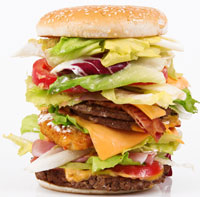
PHO or trans fats are the most dangerous fats from foods, created during food processing.
Any food that was made from or contains vegetable oils fats, may also contain saturated fats.
The PHO doesn't exist naturally. These hydrogenated oils were created to make the food more softly, where the flour produces a more desirable texture in the baked product.
Because PHO are cheaper than animal source fats, these oils are available in a wide range, and many baked products contain these toxins.
Note: The problem with trans fats is that they are very difficult to eliminate from your body. Moreover, don't think you'll get away by choosing foods with a small quantity of trans fats. Because you'll have multiple servings of the food, the PHO will add up.
Partially Hydrogenated Oils have been implicated in circulatory diseases, including heart disease. As a patient with sleep apnea, where the heart is hugely affected by low sleep quality, PHO must be avoided at all costs.
Avoid Foods With Too Much Added Sugar
Most importantly, avoid foods where the sugar is at the top of ingredient list. The first ingredient in the list usually exists in the biggest quantity.
In addition, you want to avoid:
- anything that ends in ose (glucose, fructose, maltose),
- any kind of syrup (corn syrup, brown rice syrup),
- sugar or brown sugar,honey or molasses.
- fluid food calories: juices, soda, fruit drinks, sport drinks.
These foods are less nutritious than unprocessed food, and all the sugar in them will have a large effect on your blood sugar.
Go for the whole fruit, not just the juice, because the fruit gives the nutrients with less calories and sugar than the fruit juice (which mostly has a couple of vitamins, but mostly sugar).
Avoid Products With Long List Ingredients
The ingredient list is made by order from the most to the least. The higher up in the ingredient list, the more likely to be in greater quantity in the food.
Also, the longer the ingredient list, usually the more processed the food is.
Bottom line... Opting for food products with shorter ingredient list results in opting for less processed food, which means a healthier diet and a more effective sleep apnea weight loss.
